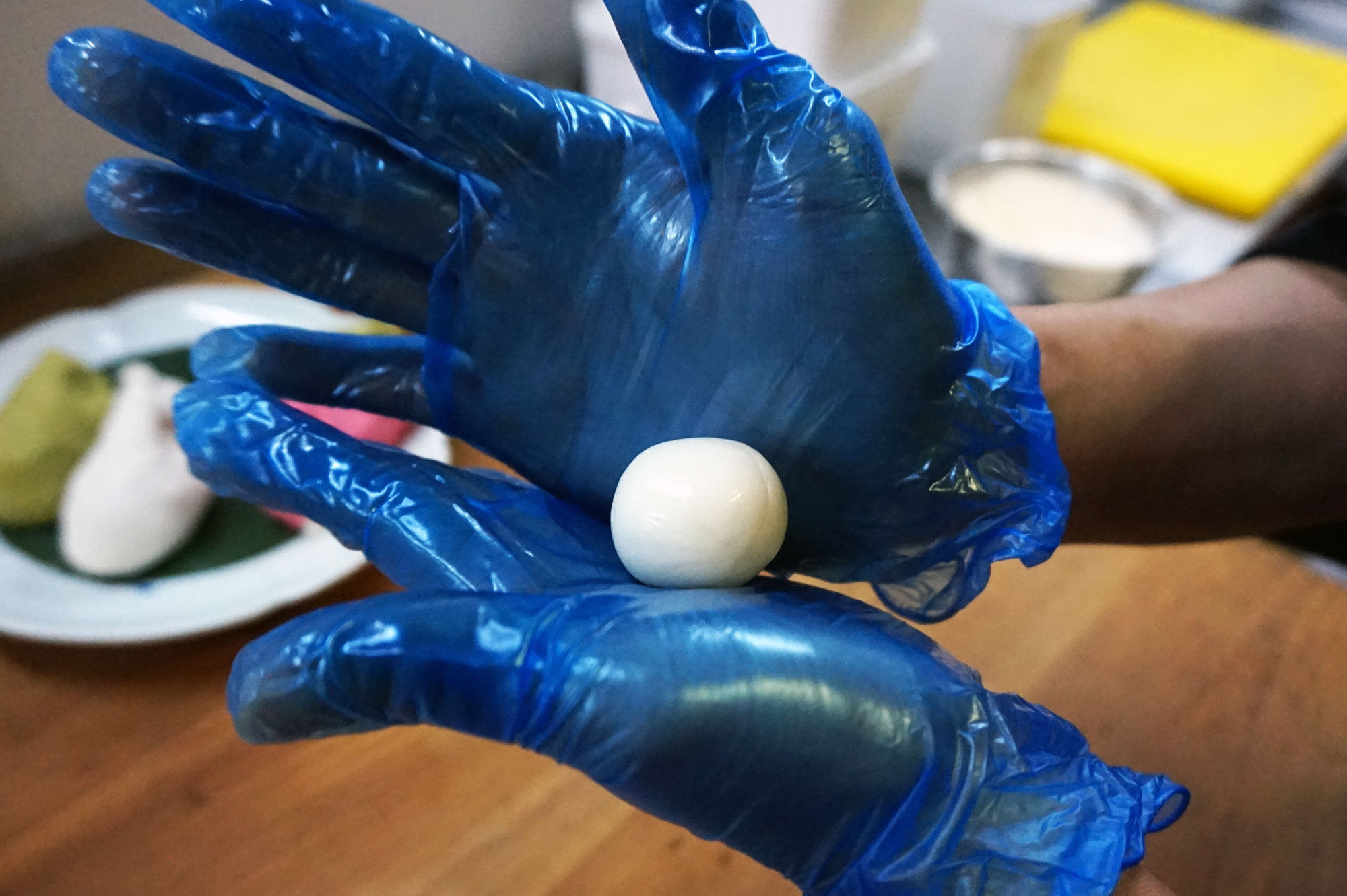I am the youngest member of my family, which means that as a child at family gatherings, I often felt like the runt of the litter. I was a lot smaller than everyone else, so would get elbowed out of the way at the table and had no hope of keeping up with my lightning-fast older relatives as they folded dumplings together in the kitchen.
Chinese New Year was no different. The holiday is a chance to prepare and share food as a family, but it’s also kind of an excuse to compete with one another and see who can roll the most tang yuan in the shortest amount of time. Which, if you’re the little one, means that you don’t stand a chance.
Videos by VICE
Happily, none of this hampered my appetite for the small, delightfully gummy sweet dumplings. Made from glutinous rice flour and water, tang yuan are enjoyed as a symbol of togetherness during the Chinese lunisolar year.

“In Chinese, the word ‘tang yuan’ [湯圓] literally translates to ‘soup rice balls’ and this phrase sounds a lot like the word for ‘reunion’ [團圓], which represents that the family is complete,” explains Frank Ye, editor of London’s Chinatown website and MA graduate in China Studies from London School of Economics. “In this day and age, it’s probably the only time of the year when family members can actually be together. So eating tang yuan is a way of reasserting ourselves the importance of family and being with family.”
Tang yuan’s spherical shape and chewy texture makes them similar to Japanese mochi balls, only they’re slightly smaller and rounder. Their outer layer is relatively bland, but inside is filled with black sesame, red bean paste, or ground peanut. The dumplings are served in a seasoned soup—typically a sweet, syrupy ginger broth that can include fermented rice, pandan leaves, or aromatic tea.


The rice balls weren’t always known as tang yuan. Back in the Yongle era of the Ming Dynasty in 1360, they were called yuan xiao [元宵], meaning “first evening.” Their name was changed in the 19th century when emperor Yuan Shikai became suspicious about the fact that it sounded a lot like yuán xiāo [袁消], which implied “removing Yuan” from power.
The rice balls are now known universally as tang yuan, but there is some debate about how and when they should be served. Different regions in China have varying recipes and rituals.
“In north China, tang yuan is eaten at yuan xiao jie [the Lantern Festival] to mark the end of the Chinese New Year period and celebrate the first night of the new moon, hence why some people still call tang yuan by their more poetic name, yuan xiao,” Ye says. “However, at my home, my grandma will always make tang yuan at midnight on the night before Chinese New Year to kick off the celebrations. The number of tang yuan in your bowl should always be an even number to represent luck. Except four, which sounds like death.”

Making tang yuan isn’t just an activity for the lunar new year. They can also be dished out during Chinese weddings, the Winter Solstice festival, and any other large family reunion.
Determined to up my dumpling-making skills in time for this year’s Chinese New Year, I call on Baojian Chen, chef at London Chinese restaurant Shikumen.
“We use natural colourings for the skin to achieve vibrant colours—beetroot for red and matcha for green,” Chen says when I visit his kitchen or a tang yuan masterclass. “The skin is made from a mixture of glutinous rice flour, wheat starch, and water. It’s pretty straight forward but be sure to cover them with a wet cloth to prevent drying out.”
Once all the ingredients are combined and formed into a dough, Chan rolls it into a long cylindrical shape with his hands. He then divides into one-centimetre cubes.
“Don’t be afraid, the sweet dumpling skin is quite malleable and it’s a bit like working with Play-Doh,” Chan explains while moulding the dough. “Next, push your thumb into the centre of the dough to create a well and keep using your fingers to work your way around the skin to build up the walls of your dumpling so that it’s deep enough to hold the filling.”
Now comes the fun part: choosing what to add as the filling.
“My favourite combination is red bean with sweet red bean soup [hong dou sha] but push the boat out,” Chen says. “Be creative and find things that’ll compliment the plump skin such as nuts, coconut, chestnut, lotus root paste—or even go savoury. The world is your oyster!”

Filled and ready to go, the dumplings are boiled in water until they float to the top. Chen then transfers them into bowls filled with different soup bases.
Having learned the basics of tang yuan from a professional, I decide to experiment back in my home kitchen. I make the traditional plain rice flour skin, but fill the little balls with mango and serve in a pomelo and sago soup.
Thanks to my new and improved rolling skills, the tang yuan are sweet, colourful, and delicious. Perhaps this runt isn’t so little any more. Bring on the Year of the Dog.




